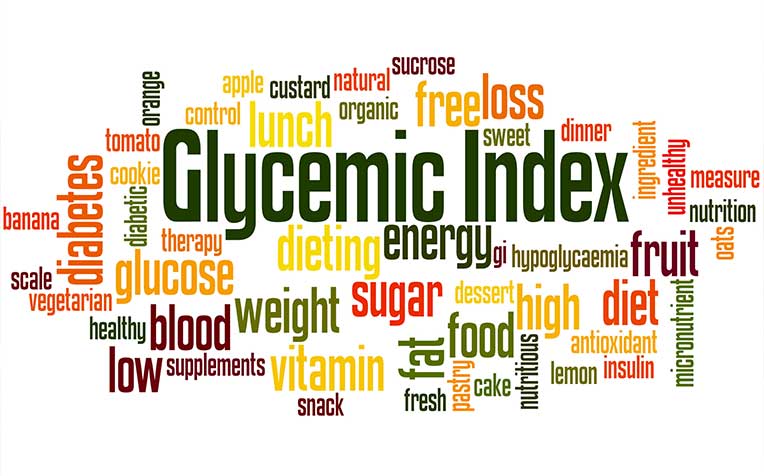
The glycaemic index of food is affected by several factors.
What is glycaemic index?
Gycaemic index (GI) is a relative ranking of carbohydrates, based on a scale of 0 to 100, according to the extent and rate at which they raise blood glucose levels after consuming carbohydrate food.
Carbohydrates with low GI values (55 or less) are more slowly digested, absorbed and metabolised, and result in smaller fluctuations in blood glucose and insulin levels. This results in favourable blood glucose profiles.
In reverse, foods with high GI values such as soft drinks and juices are those which are rapidly digested, absorbed and metabolised. This results in large fluctuations and peaks in blood glucose levels which may lead to unstable and less desirable blood glucose profiles.
The glycaemic index (GI) of food is extremely variable from one hawker to the next
"This is because recipes differ," says Ms Kala Adaikan, Senior Principal Dietitian at the Department of Dietetics, Singapore General Hospital, a member of the SingHealth group. She adds that the amount of fat used during cooking will vary, and the amount of sauces and gravies used during cooking and at the point of service will differ. The GI of foods can change, depending on factors such as how they are processed and prepared, ripeness, and other foods they are eaten with.
What affects the glycaemic index of a food item?
Not all carbohydrates are created equal with respect to their immediate impact on our blood glucose levels. There are several factors that affect GI of a food item.
Processing
Food processing affects the GI of a particular food. The more processed a food product is, the faster it digests. The cell structures of some grains such as legumes are relatively resistant to disruption and help prevent breakdown of the starches inside their cells. Therefore, legumes have lower GI values, provided that they have not been overcooked.
Similarly, the sturdiness of the cell structures of wholegrains tends to give them lower GI values too. Wholegrains, when ground into flour, make the starch more susceptible to breakdown, increasing their GI value. The more the natural integrity of a grain becomes disrupted by processing or cooking, the more its GI value is likely to increase.
Cooking methods
The GI of a carbohydrate food item is greatly impacted by cooking processes. Consider steamed rice and rice porridge: 1 bowl of steamed rice and 2 bowls of rice porridge both contain similar amounts of carbohydrate in the form of starch, but the nature and form of the starch in the porridge allows more of the starch to be exposed to salivary enzymes and the digestive system. This allows for the starch to be broken down to glucose and absorbed into our blood stream at a faster rate than the starch from the white rice. Therefore, comparing equal portions of rice and rice porridge (gram for gram of carbohydrate content) the rice porridge will have a higher GI than white rice.
Overcooking your carbohydrate food will also alter the GI of that carbohydrate food itself. Pasta that is cooked al dente has a lower GI than pasta cooked for a longer duration. The choice of sauce used will alter the GI of the dish further.
Degree of ripeness
For natural foods such as fruits, even the degree of ripeness of the particular fruit can affect its GI.
Limitations of using glycaemic index (GI)
-
Individual variations in GI response: Rate at which different individuals digest carbohydrates can vary, leading to individual differences in glycaemic response. This means that GI lists may not be reliable.
-
Combining different carbohydrate foods with different individual GIs also alters the overall GI of that meal.
-
A composite meal with protein and added fat for cooking also alters the GI of the meal itself.
- Not all low GI foods are healthy food choices. Fat lowers the GI of a food. Take chocolate for example. Chocolate has a lower GI because of its fat content, which slows the absorption of glucose into the blood stream but chocolate is very energy-dense and very calorific, also because of its fat content. This will not be to your favour, especially if you are trying to lose weight.
So, is it ok to focus on glycaemic index alone?
"Relying and focusing on GI alone is not a foolproof method to achieving optimal glycaemic control. Focusing on GI alone could lead to your diet being high in fat and calories, and being unbalanced," says Ms Kala Adaikan, Senior Principal Dietitian from the Department of Dietetics at Singapore General Hospital, a member of the SingHealth group.
This is because GI does not consider total macronutrient intake. It is the total amount of caloric intake that leads to weight gain and increased insulin resistance, and makes it harder to achieve optimal glycaemic control. In addition, it may increase your risk of heart disease.
Monitoring the total amount of carbohydrates you consume has a far greater and positive impact on overall blood glucose control than focusing on GI alone. Try not to exceed your carbohydrate requirements for the day.
Ref: O17
Contributed by


















 Get it on Google Play
Get it on Google Play